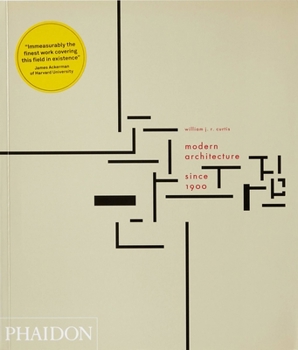Modern Architecture Since 1900
Select Format
Select Condition 
Book Overview
Since its first publication in 1982, Modern Architecture Since 1900 has become established as a contemporary classic. Worldwide in scope, it combines a clear historical outline with masterly analysis and interpretation. Technical, economic, social and intellectual developments are brought together in a comprehensive narrative which provides a setting for the detailed examination of buildings. Throughout the book the author's focus is on the individual architect, and on the qualities that give outstanding buildings their lasting value.
For the third edition, the text has been radically revised and expanded, incorporating much new material and a fresh appreciation of regional identity and variety. Seven chapters are entirely new, including expanded coverage of recent world architecture.
Described by James Ackerman of Harvard University as immeasurably the finest work covering this field in existence, this book presents a penetrating analysis of the modern tradition and its origins, tracing the creative interaction between old and new that has generated such an astonishing richness of architectural forms across the world and throughout the century.





